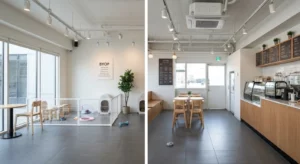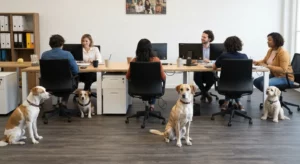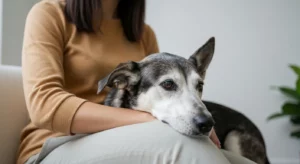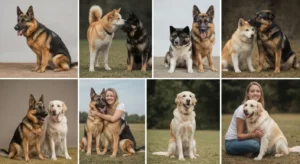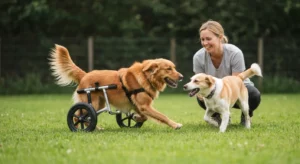A new wave of pet-centric social spaces is brewing across the United States, signaling a potential resurgence of the pet café concept in 2025. Driven by a post-pandemic shift in lifestyle and a generation of owners who view their pets as integral family members, these modern pet coffee shops are moving beyond the novelty of resident cat parlors. Instead, they are championing a “bring-your-own-pet” (BYOP) model, creating hybrid spaces where humans can sip lattes while their canine companions socialize. However, as entrepreneurs rush to meet this demand, they face a complex landscape of public health regulations, animal welfare concerns, and questions about the long-term viability of the business model.
A Post-Pandemic Shift: The Driving Forces Behind the Trend
The renewed interest in pet coffee shops is not emerging from a vacuum. It is the direct result of several converging societal trends, supercharged by the pandemic years. The most significant factor is the continued “humanization” of pets, where animals are increasingly integrated into every facet of their owners’ lives.
According to a comprehensive 2025 consumer report from the American Pet Products Association (APPA), 72% of pet owners between the ages of 25 and 40—a demographic that now represents the largest segment of pet ownership—report experiencing loneliness or a desire for more community-oriented activities. The same report found that 58% of these owners would visit a pet-friendly café or social club at least once a month if one were available in their area, citing “socialization for both me and my pet” as the primary motivator.
“The dynamic has fundamentally changed,” explains Leo Martinez, a Senior Analyst specializing in consumer trends at Pet Market Insights. “The rise of remote and hybrid work means people are spending unprecedented amounts of time with their pets. The daily dog walk is no longer enough. Owners are actively seeking ‘third places’—environments outside of home and work—where their pets are not just tolerated, but welcomed. Pet coffee shops are filling this niche perfectly.”
This desire for community is what inspired Sarah Jenkins to open “The Wagging Bean,” a new dog-friendly coffee shop in Austin, Texas, slated for a fall 2025 opening. “After adopting my dog, Gus, during lockdown, he became my constant companion,” Jenkins says. “I wanted a place where I could get my morning coffee and do some work without leaving him tied up outside or alone at home. I realized thousands of other people in my city felt the exact same way. This isn’t just about coffee; it’s about building a community hub for a new generation of pet owners.”
The New Blueprint for Pet Coffee Shops
While the term “pet café” often evokes images of the classic cat café, where patrons pay a fee to interact with resident, adoptable felines, the 2025 revival looks significantly different. The market is now splitting into two distinct, and sometimes overlapping, models.
The Traditional Model: Resident Animal Cafés
The original concept, which first gained popularity in Asia, involves cafés that house a population of resident animals—most commonly cats, but sometimes dogs, rabbits, or even more exotic creatures. These establishments often partner with local shelters, with the animals being available for adoption. While still popular, this model faces high operational costs and significant animal welfare scrutiny.
The Growth Model: Bring-Your-Own-Pet (BYOP) Cafés
The ascendant model is the BYOP or dog-friendly café. These venues are designed from the ground up to accommodate owners who bring their own pets, primarily dogs. According to a new analysis from the National Restaurant Association, business license applications for “animal-integrated food service establishments” have seen a 22% year-over-year increase in the first half of 2025, with the vast majority being BYOP concepts.
“The BYOP model presents a more scalable and legally streamlined business opportunity,” notes Martinez. “Operators don’t take on the 24/7 responsibility of caring for a resident animal population. Their focus shifts from animal husbandry to facility management and creating a safe, enjoyable experience for paying customers and their companions.”
These next-generation pet coffee shops are investing heavily in specialized infrastructure to make this work. Common features include:
- Dual-Zone Layouts: Many feature a pet-free zone where food and drinks are prepared and can be consumed, and a separate, securely gated “pet zone” or outdoor “paw-tio” where animals are allowed.
- Pet-Centric Amenities: Menus often feature items for dogs, such as “puppuccinos” (a cup of whipped cream) or house-baked dog biscuits. Water stations, durable toys, and even agility equipment are common.
– Specialized Sanitation: Enhanced HVAC systems for air filtration, non-porous flooring like sealed concrete or epoxy, and dedicated “oops stations” with cleaning supplies are standard.
Navigating a Minefield of Regulations and Health Concerns
Despite the consumer enthusiasm, opening a pet coffee shop in the United States is a formidable challenge due to a complex web of health and safety regulations. Health codes, which are typically set at the state and local levels, have historically created a strict separation between animals and food preparation areas.
“The primary public health concern is the prevention of zoonotic diseases—illnesses that can be passed between animals and humans—and managing allergens for patrons and staff,” explains Dr. Kenji Tanaka, a public health researcher at the National Institute for Zoonotic Diseases. “While the risk of a serious disease like rabies or salmonella being transmitted in a well-managed café is extremely low, issues like ringworm, intestinal parasites, and dander are very real concerns that require stringent protocols.”
Successful operators navigate this by working closely with their local health departments from the outset. Sarah Jenkins of The Wagging Bean detailed her process: “We designed our entire facility around the health code. Our coffee bar and kitchen are completely separated from the dog-friendly lounge by a double-doored entryway. Staff are prohibited from moving between the two zones without following strict handwashing protocols. We’ve essentially created two separate businesses under one roof.”
Most BYOP cafés also require owners to sign waivers and provide proof of up-to-date vaccinations for their pets before entry. This legal and procedural framework is essential for mitigating risk and ensuring a safe environment for everyone.
The Million-Dollar Question: Is It Good for the Animals?
Beyond human health, the most pressing question is about the welfare of the animals themselves. Experts agree that the environment of a bustling café is not suitable for every pet.
Dr. Anya Sharma, DVM, a board-certified veterinarian specializing in animal behavior at the Urban Animal Wellness Center, offers a nuanced perspective. “For a well-socialized, confident, and laid-back dog, a pet café can be a wonderfully enriching experience,” she says. “It provides mental stimulation, positive social exposure, and strengthens the bond with their owner. However, for an anxious, fearful, or reactive dog, it can be an incredibly stressful and overwhelming situation that could lead to behavioral problems or even aggression.”
The responsibility, Dr. Sharma emphasizes, falls squarely on the owner to “know their pet.” A dog that is uncomfortable in a crowded dog park will likely not enjoy a crowded café. She also points to the importance of the café’s role in managing the environment.
“Responsible establishments should have trained staff, often called ‘ruff-arees,’ who can monitor dog body language and intervene before conflicts escalate,” Dr. Sharma suggests. “They should also enforce rules, such as no resource guarding of toys or food, and have clear procedures for managing altercations. The physical space must also include quieter corners or visual barriers where dogs can decompress if they feel overwhelmed.”
For resident animal cafés, the welfare concerns are even more acute. “The animals in these facilities need guaranteed, permanent private spaces where they can retreat from human interaction whenever they choose,” Dr. Sharma adds. “Without this right to withdraw, they can suffer from chronic stress, which compromises their immune systems and overall well-being.”
The Road Ahead: The Future of Socializing with Pets
The trend of pet coffee shops in 2025 appears to be more than a fleeting novelty. It reflects a durable shift in our relationship with our pets. The success and sustainability of this burgeoning industry will depend on a tripartite commitment: from entrepreneurs to invest in safe and thoughtful designs, from patrons to be responsible and realistic about their own pets’ temperaments, and from regulators to create clear and consistent guidelines that protect public health without stifling innovation.
“This isn’t just a pet trend; it’s a hospitality trend,” concludes analyst Leo Martinez. “These cafés are selling an experience and a sense of belonging. If they can successfully navigate the operational and ethical challenges, they have the potential to become a lasting and beloved fixture in urban communities across the country.” For now, all eyes are on pioneers like The Wagging Bean to see if they can pour the perfect blend of commerce, community, and compassion.


